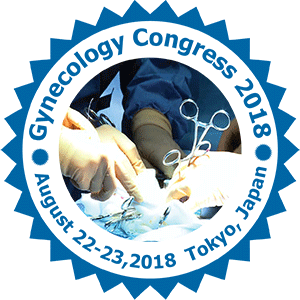
Stefani Dequilla Dela Cruz
The Medical City, Ortigas Avenue, Pasig City, Metro Manila, Philippines
Title: A retrospective cohort study on the rate of onset of spontaneous labor prior to 39 weeks age of gestation and associated maternal and neonatal outcomes among low-risk women with prior cesarean section in a tertiary hospital: a 5-year review
Biography
Biography: Stefani Dequilla Dela Cruz
Abstract
The rate of cesarean section (CS) has been increasing worldwide, and many countries exceed estimated ideal-population CS rate of the WHO of 15%. The most common indication for a repeat cesarean section (RCS) was a previous CS. The recommended optimal timing for RCS is 39 weeks, yet, 10-12% undergo spontaneous labor prior to 39 weeks. Due to these, they are at an increased risk of maternal and neonatal complications. The primary objective of this study was to determine the rate of spontaneous onset of labor prior to scheduled RCS at 39 weeks age of gestation (AOG) among low-risk women in a tertiary hospital. A retrospective, cohort study was done to determine the rate of spontaneous onset of labor prior to 39 weeks AOG among low-risk (no medical condition) women admitted in a tertiary hospital from January 2012 to December 2016. Information regarding prenatal/antenatal care, delivery, maternal and neonatal outcomes were obtained from chart review. Descriptive analysis was done to summarize demographic profile; and STATA 12.0 was used to further data analysis. Of 2618 women who underwent RCS from 2012 to 2016, 834 (31.8%) were classified as low-risk. Among the 834 pregnancies, deliveries occurred at 39 (53%), 38 (26%) and 37 (21%) weeks AOG. Spontaneous labor occurred prior to 39 weeks in 47% (n=396). More patients had history of infection (5%, P=.015), threatened/preterm labor (5% vs 3%), premature rupture of membranes (7%, P<.0001) and uterine contractions (94%, P <.0001); and three neonates had Transient tachypnea of the newborn (TTNB) among those who underwent spontaneous labor. Over-all, maternal and neonatal outcomes did not vary significantly between patient groups. The rate of spontaneous labor among low-risk women was greater than the estimate of the WHO. Maternal and neonatal outcomes were not statistically significant among gestational age. To note, the risk of TTNB among patients who underwent spontaneous labor validates the delivery at 39 weeks AOG. Information obtained from this study may contribute to the patients’ and doctors’ awareness of the possibility to undergo spontaneous labor prior to scheduled RCS, for them to be prepared during pregnancy.

